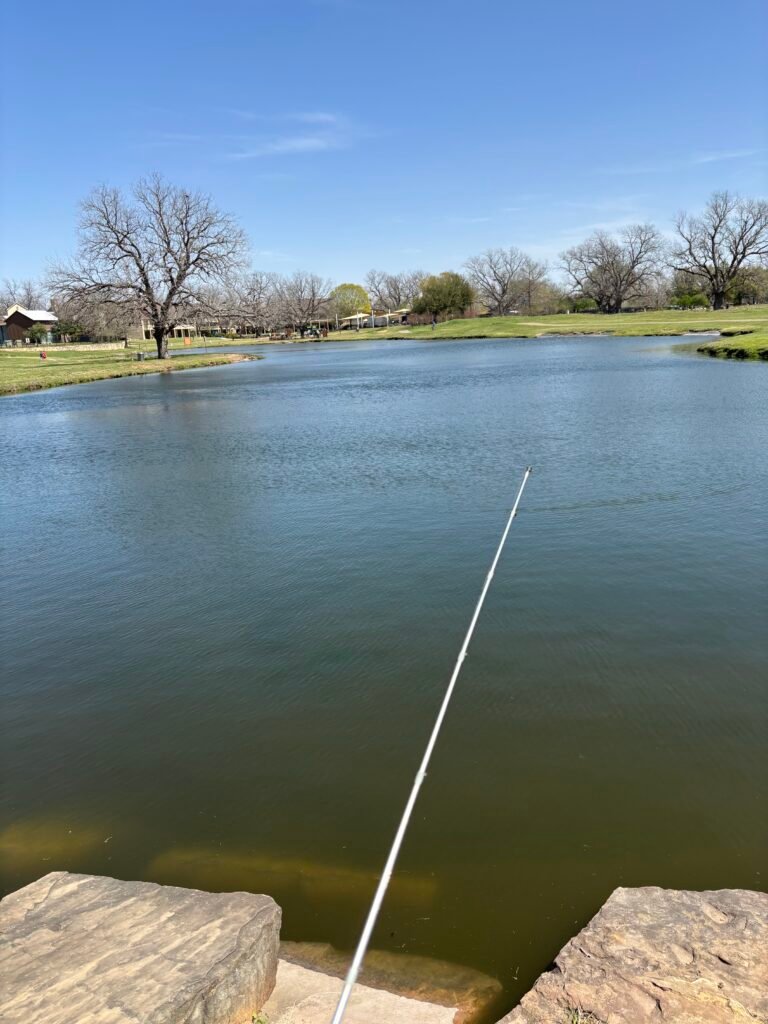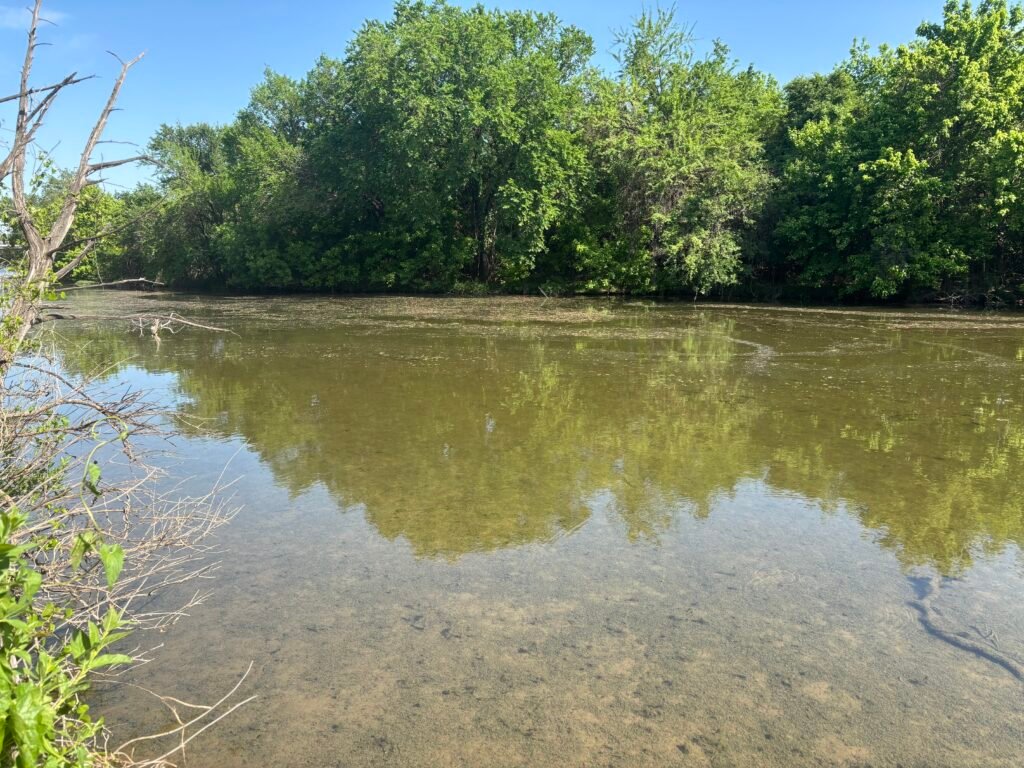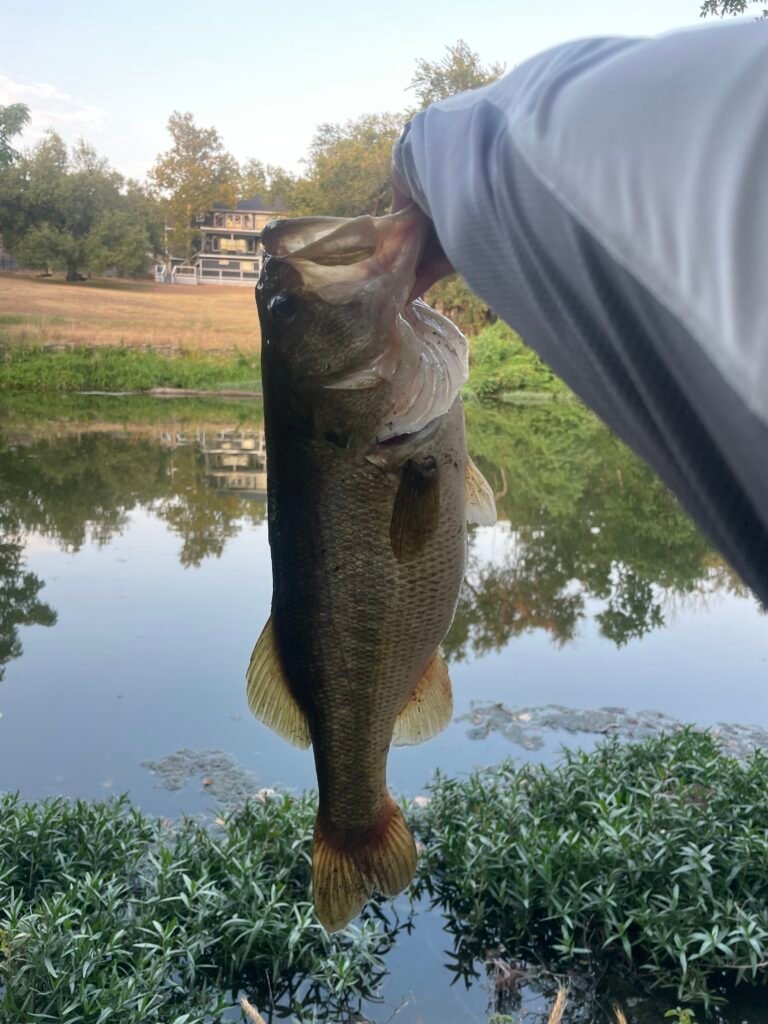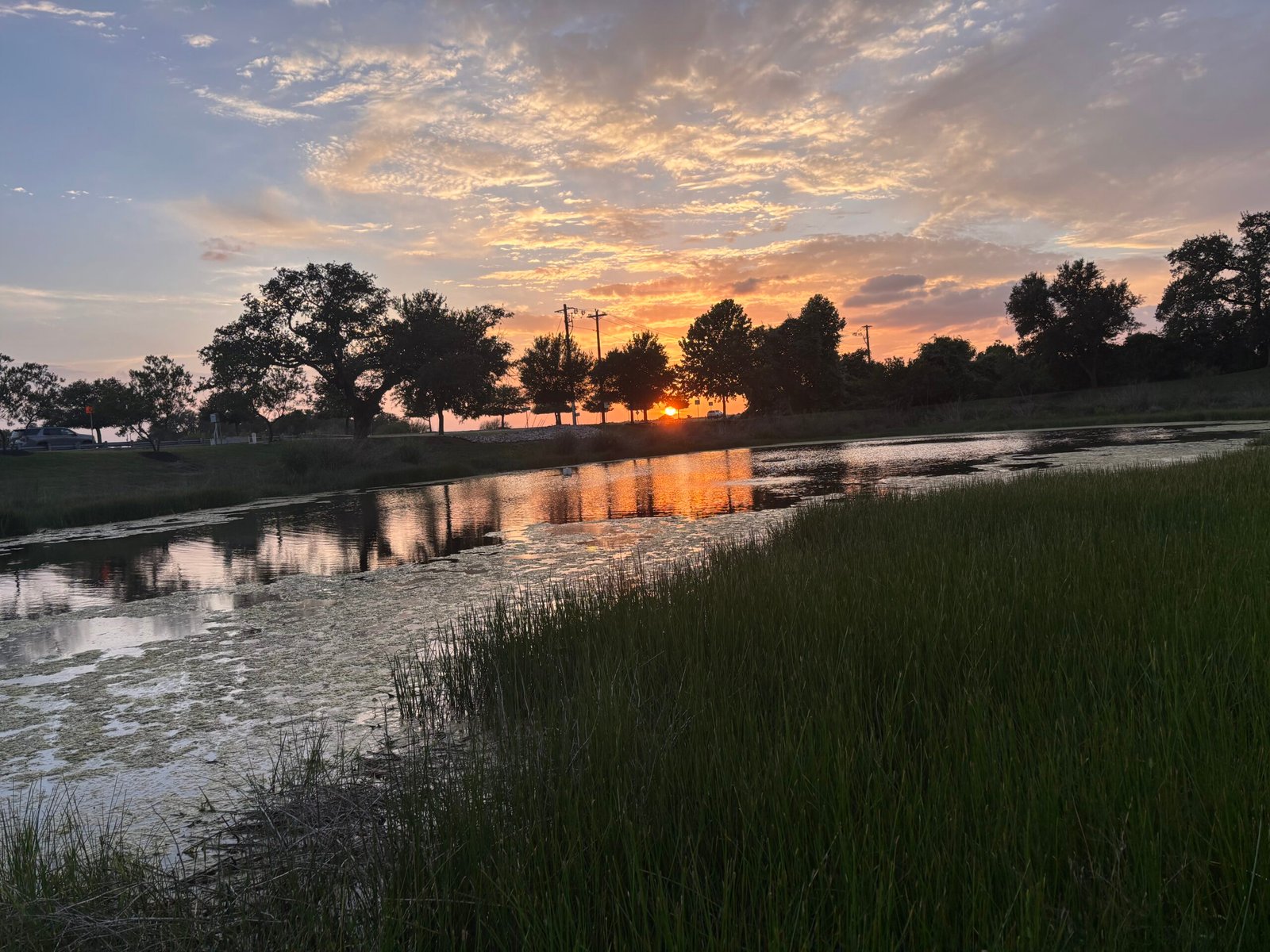Fishing isn’t always easy.
In fact, you’ll have many more days that are bad or just okay than good or great. That can be especially true with pond fishing. The ceiling for a good day on a lake is a lot higher: a full bag limit with a 5 pounder mixed in might be considered a good day. When pond fishing, sometimes even catching one fish should be considered a success. Why is that? You’ve probably asked yourself many times. “Why can’t I catch fish today?”
Today, I went for a little fishing trip after a workout. I didn’t get any bites, any taps, and I barely saw any fish. I knew it wasn’t really the best time to fish, and I haven’t had much luck where I was fishing. So today, I’ll be going over 5 reasons you may have difficulties catching fish. We’ll discuss pressured ponds, empty ponds and how you can identify them, bad times to be fishing, bad fishing habits and baits you’ll want to avoid throwing altogether. You’ll know which ponds to avoid, be a better bait chooser, and start making good days out of bad ones. Let’s dive in.

Reason #1: The Pond is Pressured
Perhaps the most common issue I run into when fishing ponds in my area is the amount of pressure they’re under. Pressure in this context refers to a pond that is constantly fished or populated. This makes fish in these ponds a lot more finicky and picky with what they bite.
Ponds that families often visit to fish with their little kids or feed ducks, ponds in heavily populated urban areas, and ponds that are near loud areas like construction sites or airports are all prime examples of pressured ponds. Fish in these ponds are under constant stress or have seen too many lures to be fooled, or both. Due to this pressure, you’ll have a lot more trouble catching fish in an urban park pond than, say, a private pond in a rural area.
How to Catch Fish in Pressured Ponds
When fishing a heavily pressured pond, you’ve got 3 good options. Your first option is to keep it interesting. Don’t fish the bread-and-butter senko or plastic worm: chances are the fish in your pond have seen hundreds of those. Throw something they’re not used to.
This may surprise some, but I’ve found good luck fishing with a medium sized glide bait in pressured ponds. Fish in ponds likely haven’t seen that type of presentation before, so throw something novel that they likely have never seen. Another way you can switch it up would be to throw a weird color, like a pink or chartreuse color.
Option 2 is to either downsize or slow down. If option one fails, you need to start finesse fishing. As a good rule of thumb, the spookier the fish, the slower you fish. This could mean tying on a ned rig or a dropshot or maybe exchanging the walking bait for a small popper. You should also consider throwing a more natural color if you aren’t already. You should avoid bright colors like chartreuse or white if they didn’t work initially.
Your last option is to move ponds, which I’m going to suggest again here in a second. If you get to a new pond and notice there’s lots of families or other anglers around, it might be best to just pack it up and find a better spot. Chances are the bass have seen so many lures and awful, obvious rigs that anything and everything will spook them.

Reason #2: Your Pond is Empty
This has probably happened to you more often than you know. You pull up to a pond, spend some time fishing it, and walk away emptyhanded, wondering what you did wrong. Unbeknownst to you, you were fishing in an empty pond: you might as well have spent an hour casting into your local swimming pool.
Obviously, the only thing you can do when fishing an empty pond is figure it out as quickly as possible and go somewhere else. That said, it’s very important that you know how to do this quickly so you don’t waste precious time.
How to Tell if a Pond Has Fish or Not
If you can, it should be your goal to find out if a pond has fish before you spend time getting there, setting up, and realizing there’s no fish.
One way I’ve done this is with an app called fishbrain. The free trial lets you see the last 5 catches at a body of water, if there are any. Try to find the spot you were considering on the built-in map. If it’s listed, check to see if the pictures match up with the location, since the locations can get mixed up. If you see fish, give it a shot.
Typical red flags of ponds with little to no fish can pretty much be visually identified within seconds of walking up. If you can see the bottom of the whole pond and there’s no fish, it’s a retention pond. These typically aren’t stocked (although there are some exceptions). Ponds in suburbs that aren’t part of a park are likely empty or almost empty. If you can see through the whole pond and there’s no fish, clearly (no pun intended) you should pack it up.
A very common red flag is turtles. If you see lots and lots of turtles, there’s a good chance the pond isn’t going to be very productive. Turtles can eat and attack baby bass, and they also compete with bass for other prey, limiting the population potential of fish. If you see a couple of turtles, it probably doesn’t mean much. But if all you see is turtles, turtles, turtles, the fishing probably isn’t the best.

Reason #3: You’re Fishing at a Bad Time
Fish especially like to hunt during specific periods of time. Although you can catch fish throughout the day, there are more and less optimal times to wet your line. This depends on the weather, the season and a couple of other factors.
During hotter months like May, June and July, mid-day is not when you want to be fishing. Unless your pond is heavily shaded (in which case you should be focusing on shade lines) the beaming sun is going to keep fish in deeper parts of the pond, staying cool and out of the sun.
During colder months, the same thing is likely to happen. Your pond is essentially going to die once winter rolls around: and without the really deep holes that lake fish enjoy, lots of pond fish will be focused on conserving energy and staying alive. This means they’ll be in the deepest parts of the pond they can find and rarely hunting.
Best Times to Pond Fish
During warmer months, aim to fish during low light conditions. This means dawn (6 AM-10 AM) and dusk (6 PM-8 PM). When the sun is setting, the frogs are croaking and the insects are out, bass are on the prowl. They’ll be actively hunting, so try and cover water with loud and aggressive moving baits like a whopper plopper or a chatterbait. If the water is calm, there’s nothing like a hollow body frog bite on a summer evening.
You could also consider night fishing, although this requires a little more nuance. I’ll have a more in-depth guide on night fishing coming soon.
During colder months, you’ll want to do quite the opposite: fish during the middle of the day, on days when the sun is beaming. This will cause fish to move up slightly shallow and sun themselves, which can be a perfect opportunity for targeting them. These fish are still sluggish, so don’t pull out a frog just because they’re shallow. Stick to your downsized winter presentations.

Reason #4: You’ve Got Bad Fishing Habits
A surprising amount of what goes into catching fish is just common sense. If you stomp up to a pond bank wearing a yellow shirt and blasting music from a speaker, I highly doubt you’ll have any luck. If the pond is clear as crystal and you insist on throwing a pink fluke, don’t be surprised when you catch no fish. There are lots of bad habits I see people doing when fishing – bad habits I’ve been guilty of myself. Avoiding them will catch you a lot more fish.
How NOT to Approach a Pond
As I said above, don’t wear brightly colored clothing. Stick to natural colors like greys, greens and beiges. And despite what you may have heard, fish are sensitive to loud noises. Talking is one thing, playing music or yelling is another. Fish don’t have ears like we do, but they do have ears
Other things you should consider are your line size, pond approach and how you progress the pond. Don’t walk directly up to the bank of the pond: try to see if there’s any fish in the shallows from a distance, so you can quietly approach them and get a cast in. Don’t cast directly on top of fish, cast in front of or near them. If your pond is clear, it’s probably not a good idea to be throwing on red 30 lb fluorocarbon line.
Pond progression is a large part of why people don’t catch fish. If I told you I couldn’t find my way out of a maze and it turned out I had just headbutted into the same wall over and over again before giving up, you’d think I was pretty dumb, right? The same applies to fishing a pond. This is one of the most important pond fishing principles to grasp.
When you fish a pond, don’t just walk up, stay glued to the same spot for an hour, then leave. Walk the banks. Cast along the edges. Cover lots of water. Target any and all cover you can see. Go to the fish, because they won’t come to you.

Reason #5: You’re Throwing a Bad Bait For Ponds
The final mistake I see lots of people make is they throw baits that are better suited for lakes than for ponds, or they don’t match the hatch. For example, throwing a deep diving, shad colored crankbait is not going to perform very well in a pond. Simultaneously, if you live in Florida and you’re fishing a pond with primarily sunfish, buying a $32 trout swimbait is going to be a big fat waste of $32.
Understanding the type of prey in your pond is essential for choosing a bait presentation. If your pond has lots of crawfish, throw crawfish imitations. If your pond is full of frogs, throw topwater. Throw what the fish eat: don’t just throw what you think looks like a fish would eat.
Best Baits For Pond Fishing – And What NOT to Throw
So that you’re not making this mistake, I’ll give you couple of baits I would suggest off the top of my head that should give you success, as well as a couple I typically avoid.
A go to for me for most ponds is some kind of topwater, whether that be a frog or a buzzbait or a walking bait. These types of baits are easily fished in most ponds without fear of being hung up, and the strikes are aggressive and exciting.
Topwater is typically a bait to throw when fish are more aggressive. If the fishing is slow, put the topwater down and pick up something slower. I’d suggest a senko or a Texas rigged soft plastic. Remember, matching the profile of your bait with the forage in the pond is very important.
I typically avoid most treble hook baits that aren’t topwater when fishing ponds, specifically shallower ponds. For example, I don’t throw many crankbaits, I rarely throw jerkbaits and almost never touch lipless crankbaits. I find these baits spend more time mucked up than actually working like they’re supposed to. These are some of the most iconic, well known baits, so picking them up is a lot of new angler’s go tos. Don’t make the same mistake.

Fishing Responsibly
With the help of these tips and tricks, I hope you’ll find more success next time you have a difficult day of fishing. Always remember to fish responsibly. Check the laws in your state regarding fishing season and requiring a fishing license. Always make sure to verify if the pond you’re fishing is public or ask for permission to fish a private pond.
Happy fishing!





Leave a Reply